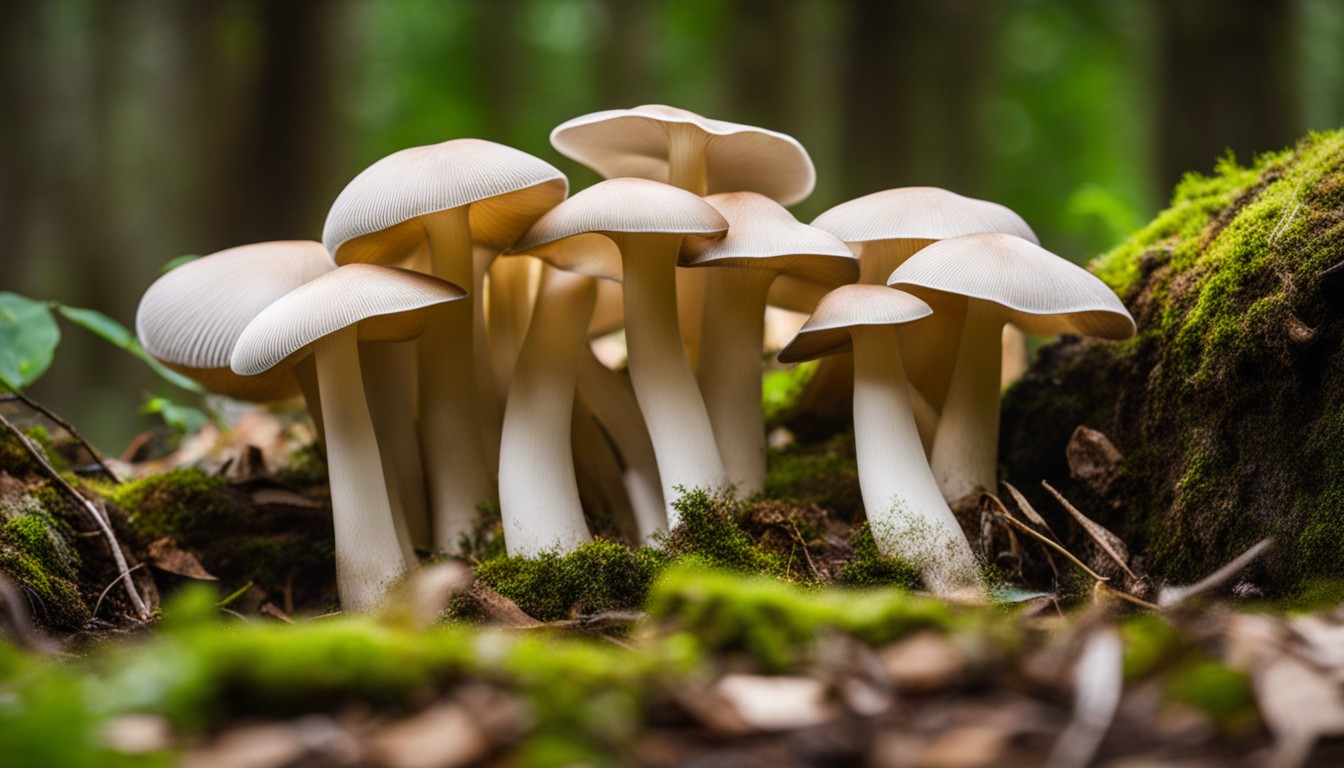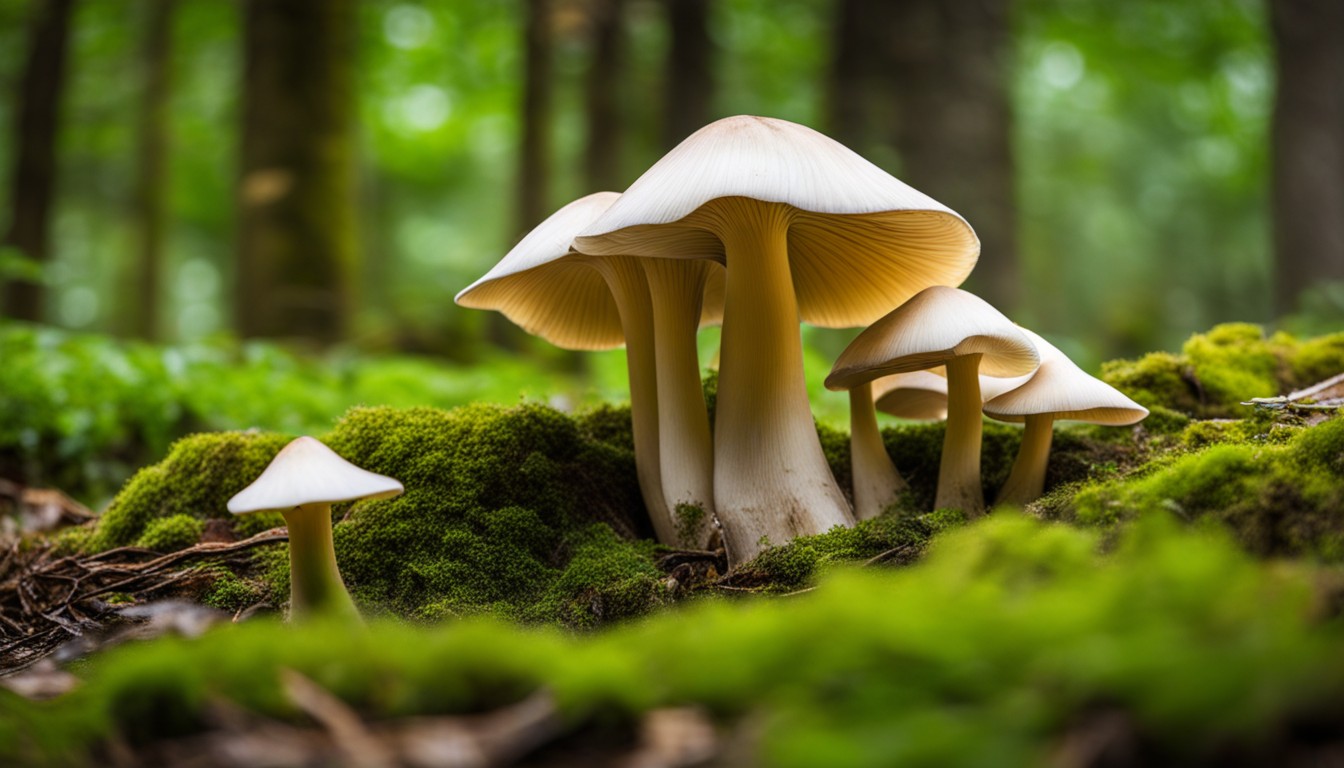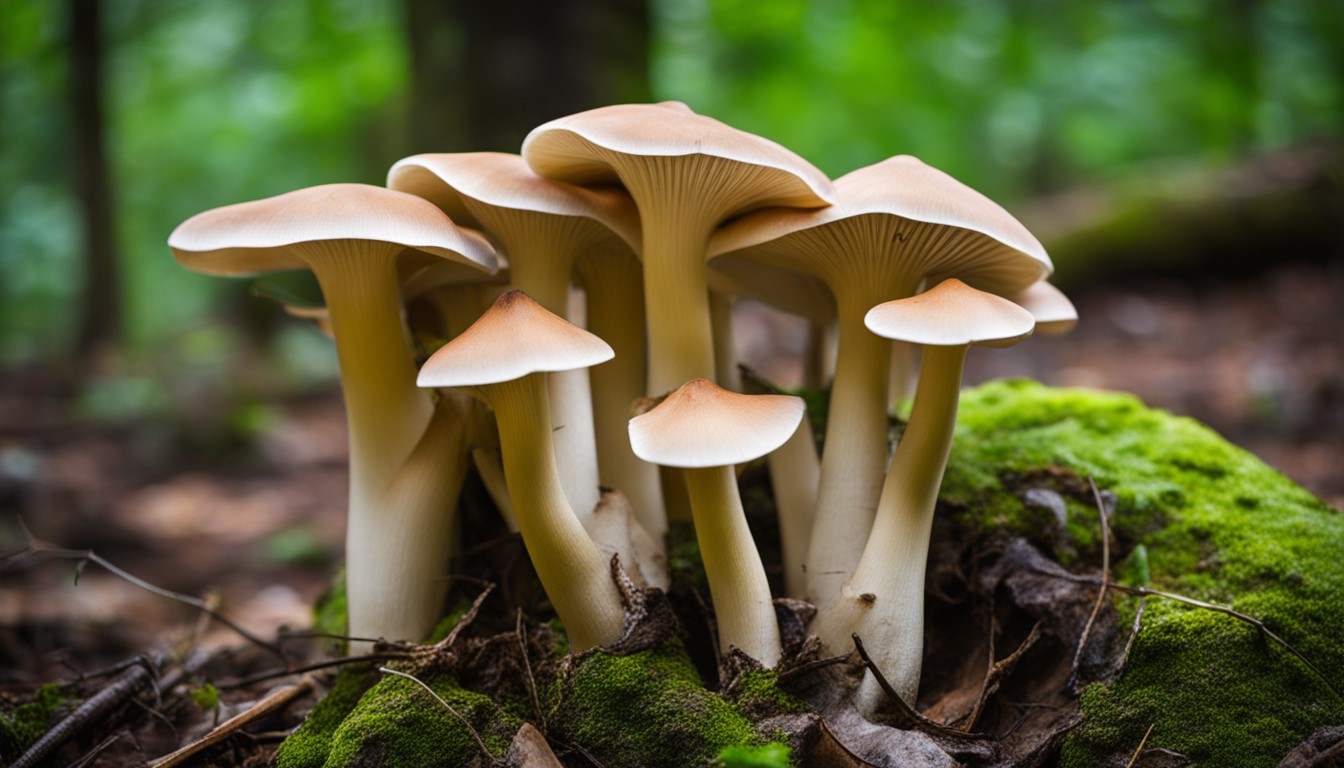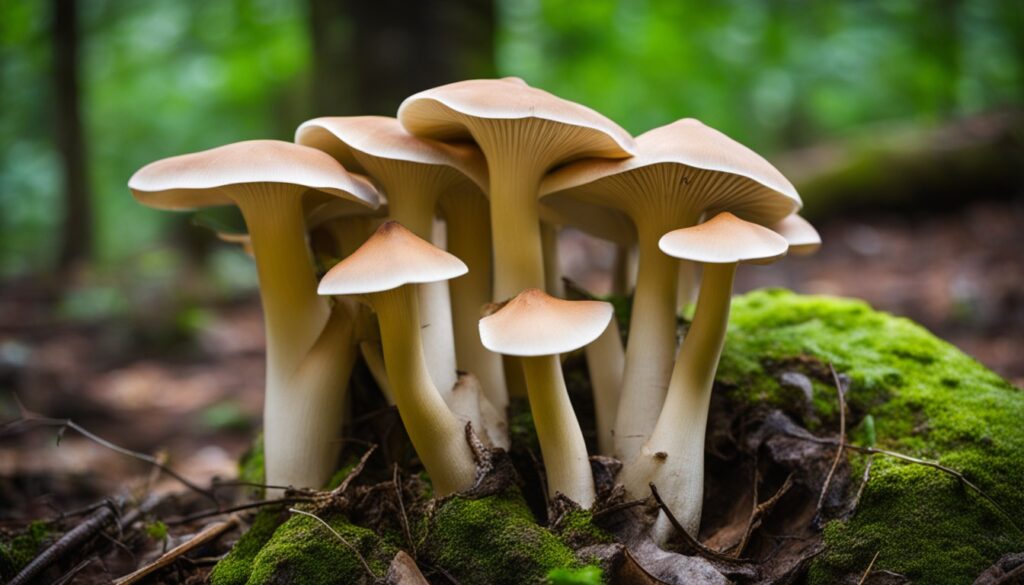Are you a mushroom enthusiast in Ohio? If so, you’re in luck because the fall season offers a plethora of fascinating fungi to explore. In this comprehensive guide, we will delve into the diverse world of Ohio fall mushrooms, providing you with the knowledge and tools to identify and forage safely. From the iconic golden chanterelle to the elusive hen of the woods, discover the remarkable variety of mushrooms that grace the Ohio landscape during the autumn months. Embark on your foraging adventure with confidence and learn how to make the most of this bountiful season.
The Beauty of Ohio Fall Mushrooms
Ohio Fall mushroom’s unique vibrant hues, intricate shapes, and diverse species, offer a spectacular sight echoing the richness of Ohio’s biodiversity. These mushrooms, with their unique aesthetic appeal, are a testament to nature’s remarkable palette and creativity.
Why Fall Mushrooms are Special in Ohio
Fall in Ohio creates a unique climate that is highly conducive to mushroom growth: cool temperatures, abundant rainfall, and decomposing leaf litter provide a rich substrate for spore germination and mushroom proliferation. This results in an explosion of diverse fungal species spread across the state.
In fall, Ohio’s mixed clime catalyzes a bloom of unique mushroom species, fostering a rich biodiversity for mycologists and enthusiasts alike, including the rare American Matsutake.
During the colorful fall season, aficionados get a chance to discover a variety of mushroom species, including some rare and endangered ones. The unusual Pixie’s Parasol, the elusive Black Trumpet, and the endangered American Matsutake are just a few of the special species one might encounter while foraging in Ohio’s woods and meadows.
Benefits of Foraging for Mushrooms in Ohio
Foraging for mushrooms not only brings immense joy and satisfaction but also promotes greater ecological consciousness, as it promotes an appreciation for Ohio’s rich biodiversity.
Simultaneously, it proves to be economically beneficial; local restaurants and farmer’s markets are frequently in search for fresh, locally-sourced mushrooms, fostering a vibrant trade within the community.
Environmental Benefits of Mushroom Foraging
Mushroom foraging in Ohio not only holds benefits for the individual forager but also contributes to environmental sustainability. This activity promotes biodiversity and ecological balance and underlines the importance of forest conservation.
- Promotes biodiversity as mushrooms play a crucial role in nutrient recycling within ecosystems.
- Boosts ecological balance by controlling populations of other organisms such as insects through symbiotic relationships.
- Encourages forest conservation by highlighting the richness and diversity of Ohio forests and their inhabitants.
Health Benefits of Consuming Fall Mushrooms
The consumption of Ohio’s fall mushrooms not only offers culinary delight but also myriad health benefits due to their rich nutritional profile. They are packed with essential nutrients and have a vital role in enhancing immune function and promoting overall health.
- Act as a significant source of vitamin D
- Provide essential minerals such as selenium, potassium, and copper
- Rich in dietary fiber aiding in digestion
- Low in calories and fat, ideal for weight management
- High content of antioxidants promotes cellular health
- Natural source of beta-glucans to enhance immunity
- High protein content, valuable for vegetarian and vegan diets
Safety Precautions for Mushroom Foraging

Prioritizing safety gear while mushroom foraging helps mitigate the risk of contact with potentially harmful varieties. Protective clothing, including gloves and long sleeves, can provide essential barriers between you and potentially poisonous mushrooms.
Prevention of cross-contamination is vital during mushroom foraging. Individual containers for each mushroom type will ensure the safe separation of edible and poisonous mushrooms, protecting your health and the integrity of your gathered treasures.
Understanding Poisonous Mushrooms
In the fascinating realm of Ohio’s fall mushrooms, understanding which species are dangerous is a paramount step in foraging. To avoid hazards, it’s important to recognize the riskiest mushrooms before ingesting them.
- Death Cap: Often mistaken for edible varieties, it causes severe liver and kidney damage.
- Destroying Angel: This white, seemingly harmless mushroom triggers symptoms like diarrhea, nausea, and abdominal pain within 5-24 hours of ingestion.
- Autumn Skullcap: Consuming this small, bell-shaped mushroom can lead to symptoms similar to those caused by the Death Cap.
- Galerina Marginata: Also known as the Deadly Galerina, it has similar toxins as the Death Cap and Destroying Angel.
- Fly Agaric: While mostly hallucinogenic rather than deadly, it’s still unsafe to consume due to potential side effects such as sweating, nausea, and hallucinations.
Essential Tools for Mushroom Foraging
While foraging for Ohio’s fall mushrooms, having the right tools can significantly enhance your efficiency and safety. A robust toolkit is your faithful companion in this adventurous endeavor.
- Field guides for mushroom identification: Often portable and packed with essential information, a field guide will help you identify different mushroom species accurately.
- A sturdy Basket: To carry your finds without crushing them, a hardy basket is indispensable.
- A small knife: To cut mushrooms from their stems cleanly, reducing damage to the fungi’s mycelium.
- Waxed paper bags or breathable bags: These help maintain fresh mushroom condition while preventing spore cross-contamination.
- A GPS device or smartphone with GPS: Mushroom patches can often be off the beaten path; a GPS will ensure that you don’t get lost.
- Compass: In case of signal loss in dense woods, a backup navigation tool like a compass is valuable.
- A journal and pen: To note locations, descriptions, and other important details during your forage.
Identifying Edible Mushrooms
Ohio’s fall forests present a flavorful feast of edible mushrooms, such as the golden chanterelles, coveted morels, and the robust ‘Hen of the Woods.’ These delectable fungi make the foraging journey worthwhile and are generally safe to consume.
Physical characteristics are key for successful identification of edible mushrooms. Knowing about shapes, caps, gills, and spore colors can help distinguish them from potentially toxic species.
For instance, the Chanterelle is recognized by its vibrant golden-yellow hue, vase shape, and unique gills that look like shallow, forked ridges. Contrarily, the Morel’s honeycomb-like cap is a defining attribute to help them stand out.
The ‘Hen of the Woods,’ has multiple greyish-brown caps that look like a ruffled feather pile, earning it its bird-themed name. Apart from their appearance, they also have a distinct aroma which a seasoned forager can identify.
Types of Fall Mushrooms Found in Ohio

Fall’s embrace of Ohio permeates her woodland soil, spawning a vibrant array of mushroom varieties. The canopy of hues that adorn the forest floor is attributed to species like the Golden Chanterelles, the elusive Morels, the meaty Hen of the Woods, and the Chicken of the Woods, which offers a palpable delight for vegans.
Of particular interest is the Blue Foot Mushroom. Often overlooked, these small, deep-blue-hued fungi embody the entrancing mystique of Ohio’s autumn. Their delicate, nutty flavor, with hints of fruitiness, elevates the culinary charm of this seasonal bounty, marking an essential highlight of Ohio’s fall foraging.
Chanterelles: The Golden Treasure
The exquisite beauty of Chanterelles is a sight to behold each fall in Ohio, with their golden hue beautifully contrasting against the backdrop of auburn leaves. Their distinctive, vibrant color and funnel-like shape effortlessly lend them a unique charm that’s hard to miss.
In terms of edibility, Chanterelles won’t disappoint. Their delicate, slightly peppery flavor and firm, chewy texture make them highly prized among culinary enthusiasts.
These Ohio’s golden treasures are versatile. They can be sautéed with butter, combined with cream in pasta sauces, or even used to impart flavor to stews and soups.
Not only are these delectable mushrooms a treat to the palate, but they also come packed with nutrients. A worthwhile addition to meals, Chanterelles can infuse your autumn dishes with a dose of health and flavor alike.
Morels: The Delicacy among Mushroom Lovers
The tasteful secret hidden within the Ohio forest floors is the Morel Mushroom. These delicacies, unique in their honeycombed appearance and robust nutty flavor, make them a sought-after treasure among culinary enthusiasts.
Hunting for Morels in Ohio, however, is not a simple affair. These mushrooms are notoriously elusive, often growing in different locations each year, adding a tantalizing twist to their pursuit.
To safely identify Morels, it’s essential to note their distinctive ridged caps, which are typically brown or yellowish. Their growing season in Ohio spans from early April to mid-May, making this the optimal time for foraging.
Hen of the Woods: A Meaty Feast
Typically affectionately referred to as ‘Maitake’, Hen of the Woods mushrooms offer a profound, earthy flavor profile, akin to that of a rich, savory steak. These fungi are a delectable treat, particularly for those seeking a fulfilling, yet healthy dining experience.
The nutritional profile of the Hen of the Woods mushroom is impressive. Packed with fiber, vitamins B and C, and essential minerals, including potassium and copper, they enrich any meal with dense nutritional value, contributing considerably to overall health and wellness.
Turning to Ohio’s underground charm, foraging for Hen of the Woods presents an exciting, immersive encounter. A union between experiencing the vibrant fall landscape and the thrill of the hunt, it is truly a seasonal highlight.
Indeed, foraging – an activity both engaging and challenging – stimulates a natural connection with Ohio’s rich, verdant forests. The joy of finding a substantial Hen of the Woods mushroom is unparalleled, a delightful reward for the meticulous and patient forager.
Crucial to note, the Hen of the Woods mushroom prominently grows around oak trees. Pay special attention to mature trees, particularly those showing signs of decay. Your keen eyes, paired with knowledge, are key to a successful harvest of this fall treasure.
Chicken of the Woods: A Vegan Delight
With its vibrant yellow to orange coloring, the Chicken of the Woods mushroom, a feast during Ohio’s fall, provides a plant-based source of protein. Notably, its luscious, slightly tangy flavor, eerily similar to chicken, makes it a vegan delight.
Seasoned foragers often discover this wonderful mushroom growing on dead logs, primarily oak, and hardwood stumps throughout Ohio’s lush forests. It’s undoubtedly a charm that adds an entrancing color palette to the fall cornucopia.
To successfully forage for Chicken of the Woods, here’s a guide: carry a reliable mushroom identification book as these mushrooms have look-alikes, wear protective gloves, and refrain from picking tiny specimens. The Ohio fall forest bounty awaits your discovery.
Best Locations for Mushroom Foraging in Ohio

Ohio is gifted with some of the best public lands for fall mushroom hunting. Reveal your wild side in places like Hocking Hills State Park, Wayne National Forest, and Cuyahoga Valley National Park, ideal foraging grounds that abound with diverse and bountiful mushrooms. In the heart of autumn, these parks transform into a treasure trove for mushroom enthusiasts.
Ohio State Parks provide mushroom foragers with a myriad of opportunities. Surface features and microclimates unique to each park, including rich deciduous forests and moist river valleys, create an ideal habitat for a variety of fall mushroom species. Every visit promises a fulfilling and adventurous mushroom-foraging experience.
Hocking Hills State Park
Ohio’s Hocking Hills State Park, replete with lush forests, scenic waterfalls, and meandering trails, is a veritable haven for fall mushrooms. The park’s vibrant foliage and rich, moist soil offer the perfect nurturing environment for fungi to thrive.
To walk through the trails of Hocking Hills State Park during the fall season is to be surprised time and again by the astounding diversity of mushrooms sprouting up underfoot and from the sides of aged tree trunks.
The park’s microclimates created by the dense canopy, varying altitudes, and forest species contribute to the unique mushroom biosphere. The fall mushrooms here range in size, shape, color, and even taste, offering foragers a bountiful harvest.
Professionals and amateur mycologists alike celebrate the surprising fungi finds at Hocking Hills. The park hosts a myriad of mushroom species, with each corner housing a new and fascinating discovery.
Astonishingly, Hocking Hills State Park is not just a destination, but a living classroom for mushroom enthusiasts. Guided foraging expeditions here can yield handfuls of Chanterelles, Morels, Hen of the Woods, and the vibrant Chicken of the Woods, among other mushroom varieties.
Wayne National Forest
An insider’s guide to mushroom foraging can be found in the tree-filled depths of Wayne National Forest. The forest, teeming with a diverse mix of hardwood species, has created a fertile ground full of nutrient-rich humus, ideal for different types of mushrooms to proliferate.
Among the thickets and shadowy spots of Ohio’s Wayne National Forest, mushroom enthusiasts report an abundance of Chanterelles, Morels and the much sought after Hen of the Woods. Even the elusive Chicken of the Woods often shows itself in this dense and picturesque woodland.
Venturing into the forest’s heart, experienced foragers can often trace game trails or brooks, uncovering hidden pockets mushroom growth. The undergrowth, often frosted with morning dew, makes for a magical setting to uncover some of Ohio’s most precious fungi.
In the heart of autumn, while enjoying the vibrant palette offered by Wayne National forest’s foliage, the mushroom forager not only discovers edible treasures but experiences the allure of one of Ohio’s woodlands most enchanting secrets.
Cuyahoga Valley National Park
The hollow trails of Cuyahoga Valley National Park offer an abundant harvest of fall mushrooms, an enticing draw for both avid and novice foragers. Its distinct topography and biodiversity provide a remarkable habitat for diverse fungal species.
Fungus enthusiasts find an exciting assortment of mushrooms here. Teeming with rich mushroom variety, including Morels, Chanterelles, and the delicious Chicken of the Woods, the park proves a true haven for fall mushroom exploration.
Frequently Asked Questions (FAQ)
Ohio Fall Mushrooms: A Guide to Identifying and Foraging
How can I identify Ohio fall mushrooms?
To identify Ohio fall mushrooms, closely examine characteristics like color, shape, size, and the presence of features such as gills or pores.
Is it safe to forage for mushrooms in Ohio?
Exercise caution and consult expert resources to avoid poisonous or harmful mushrooms while foraging in Ohio.
Where can I find Ohio fall mushrooms?
Look for Ohio fall mushrooms in forests, woodlands, urban areas, near trees, damp areas, or decaying organic matter.
What tools do I need for mushroom foraging?
Carry a basket, pocket knife, field guide, and camera for documentation during your mushroom foraging adventures.
Are there legal restrictions on mushroom foraging in Ohio?
Familiarize yourself with local regulations and obtain necessary permits to forage mushrooms in public lands or protected areas.
Can I consume the mushrooms I find in Ohio?
Accurately identify mushrooms and consult experts before consuming any wild mushroom in Ohio.
How should I prepare and cook Ohio fall mushrooms?
Enjoy Ohio fall mushrooms by sautéing, grilling, or incorporating them in soups and stews.
What should I do if I suspect mushroom poisoning?
In case of mushroom poisoning suspicions, seek immediate medical attention and bring a sample or photo for identification.
Are there any Ohio fall mushrooms considered delicacies?
Golden chanterelles and hen of the woods are highly prized mushrooms considered delicacies in Ohio.
Can I harvest Ohio fall mushrooms for commercial purposes?
Commercial mushroom harvesting in Ohio may require additional permits and licenses, so research and comply with regulations.
Please note: This FAQ provides general guidance and should not replace expert advice or thorough research when it comes to identifying, foraging, and consuming mushrooms in Ohio.
Conclusion
Foraging for Ohio’s fall mushrooms is not merely an interesting hobby; it’s a sustainable practice that holds significant environmental and personal health benefits. This intricate dance with nature brings into focus the great beauty and diversity of Ohio’s fungal flora.
As we reflect on and embrace these treasures Ohio has to offer, we move one step closer to a sustainable, health-conscious future. Ohio’s mushroom-foraging experience serves as an advocacy for organic, local produce and a testament to cultivating closer ties with nature.
- The environmental value of mushroom foraging, contributing to the ecosystem’s health
- The health benefits from consuming locally foraged mushrooms
- The experiential learning and bonding with nature through mushroom foraging

